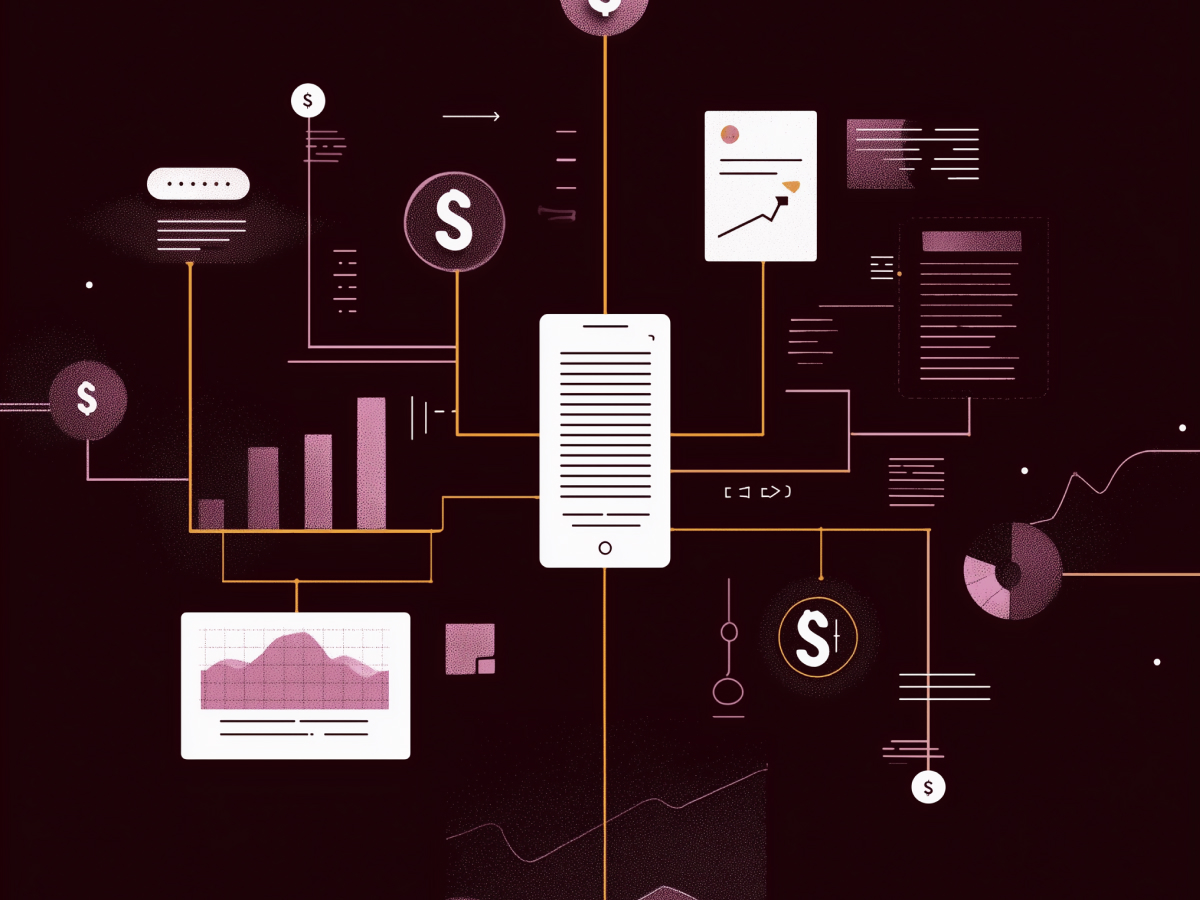A technology roadmap aligns technological strategy with business goals
Let’s be honest, many companies throw money at technology, hoping to “innovate” without knowing what that really means. A technology roadmap removes guesswork. It tells you where your tech is going, why it matters, and when investments need to land to move the business forward. It’s not about getting lost in the weeds. It’s about clarity. What are the big bets? What should scale? What needs to die?
The roadmap outlines strategic tech priorities. It doesn’t specify every line of code or each tool for a given task. Those details live in your technical plan. The roadmap dictates direction: key milestones, focus areas, and tech bets that align directly with business value. Whether the goal is reducing operational friction, accelerating customer growth, or enabling new product capabilities, the technology roadmap makes that pathway visible. And more importantly, it makes it intentional.
The mistake executives often make is confusing activity with strategy. Just because a team is busy doesn’t mean it’s building the right things. A proper roadmap keeps the entire organization aligned on efforts that bring measurable results. It’s the way you scale technology with purpose.
Product roadmaps and technology roadmaps serve distinct but complementary roles
Product teams often focus on the customer, what they need, what features solve their problems, and how fast those solutions can be delivered. That’s what a product roadmap tracks. It’s outward-facing. It explains what’s being built, why users need it, and how it drives market relevance. It gives clarity to business units like marketing, support, and sales, and sets expectations from product managers to investors.
But a product roadmap can’t exist in a vacuum. Technology must support it. The tech roadmap makes this possible. It’s inward-facing, detailing how your systems will handle growth, performance, and security. It covers architectural shifts, the integration of new platforms, the retirement of fragile or outdated systems, and planned upgrades that enable future products. While the product roadmap sets the vision from the market’s perspective, the tech roadmap ensures your engines don’t stall when the business needs to move faster.
These two tools must sync. If the product roadmap expands user demands, your tech roadmap should address the infrastructure and engineering effort required to meet that demand. That’s how you prevent teams from overcommitting, missing timelines, or chasing features that current systems can’t support.
The role of leadership here is simple: know the difference, and make sure both roadmaps evolve together. When done right, your technology doesn’t just support the business, it scales it.
The structure of a technology roadmap varies with company size and strategic objectives
There’s no standard format for a technology roadmap. The structure should flex based on your organization’s scale, maturity, and velocity. Startups, for instance, don’t need pages of architectural frameworks or system-wide visibility tools. They need speed. The aim is to validate the product’s potential and make sure the foundational tech can support rapid iteration. That often means defining a Minimum Viable Architecture that supports the Minimum Viable Product, not more.
Enterprises, on the other hand, operate on a different level. Complexity is higher. Dependencies run deeper. Stakeholder demands are broader and often span departments, geographies, and compliance boundaries. Their roadmaps serve as strategic planning instruments, used by CTOs, CIOs, and other senior leaders to align technological bets with growth targets, security mandates, and market expansion plans.
What works at one stage of growth doesn’t scale to another. Leadership needs to be aware of that shift, and build in alignment tools accordingly. At the early stage, it’s about feasibility and speed. At later stages, it’s about efficiency, resilience, and shared roadmap clarity across hundreds of people. Both require discipline. Only the focus changes.
A strong technology roadmap requires clear vision
A roadmap only works if it’s grounded in reality. That starts with vision. Leadership has to define why technology exists in the business beyond “keeping the lights on.” Whether the goal is entering new markets, driving operational automation, or building proprietary platforms, the tech roadmap needs to reflect those priorities.
Then comes technical understanding. Leaders must know what systems are in place, what works, what doesn’t, and where the breaking points are likely to show up under load. This requires full visibility into your stack, from databases and APIs to user metrics, end-of-life dates, and technical debt assessments. Without that clarity, your roadmap is just speculation. And no one has time to build against optimism.
Finally, collaboration is non-negotiable. Creating a roadmap without input from teams who actually build the systems leads to misaligned timelines and missed risks. Developers, engineers, and system architects bring critical details: dependency windows, hidden bottlenecks, and potential efficiencies. Their input doesn’t slow the process, it makes it valid.
At the same time, product managers and business leads often don’t understand the technical trade-offs. That’s why senior engineering leaders must step up and communicate clearly. Translate impact. Explain trade-offs. Highlight cost and risk. When that connection is strong, the roadmap becomes a shared strategy, not just a list of features or dreams.
Ruthless prioritization is essential to maximize impact and resource efficiency
Resources are finite. Time, talent, and budget won’t stretch to meet every initiative. That’s why prioritization isn’t optional, it’s the core function of leadership. A strong technology roadmap filters out noise and puts focus on the few things that move the business forward. Every item on the list should have a direct link to measurable value: revenue acceleration, cost reduction, market expansion, or technical enablement that supports those outcomes.
The decision-making process shouldn’t be driven by opinions or wish lists. It requires sharp evaluation of feasibility, alignment with company goals, downstream dependencies, and risk exposure. Teams must be clear on trade-offs. Some initiatives won’t make the cut, intentionally. That’s where discipline matters most. Letting go of “nice-to-haves” is what allows space for what the business actually needs.
For executives, that means repeatedly asking: does this solve a critical problem, enable scale, or deliver user impact worth the investment? If not, it shouldn’t be on the roadmap. Being selective isn’t restrictive. It’s strategic. And it gives your organization a clear sense of where to focus.
Flexibility must be built into the roadmap
Markets shift. Customer needs evolve. Technology cycles move fast, faster than most roadmap timelines anticipate. That’s why flexibility isn’t a feature of a good technology roadmap; it’s a requirement. The roadmap must be responsive and able to adapt as new information comes in. Static roadmaps are dangerous. They lock teams into past assumptions and introduce unnecessary risk.
Regular reviews of the roadmap should be built into the company’s broader development rhythm. This isn’t just about updates, it’s about strategic recalibration based on new data. Did a planned vendor sunset a platform? Did market signals change customer priorities? Did internal development uncover scalability challenges? These all require fast adjustments to what’s planned and when.
Flexibility doesn’t equal chaos. It means having protocols to adjust course without stalling momentum. For C-suite leaders, the critical role here is to support dynamic plans instead of fixed projections. The roadmap should still aim toward long-term priorities, but how you get there must remain responsive to the real world.
Being open to change, while holding firm on strategic intent, is what keeps execution relevant and timelines defensible.
Parallelizing tasks in technology development helps prevent bottlenecks
Most development teams don’t fail because of poor coding, they slow down due to process constraints. Traditional sprint models often force a rigid pace that doesn’t align with how real work flows. Tasks vary in complexity. So do dependencies. If one piece is delayed, others wait. That’s wasted time and lost momentum.
Organizing development in a way that enables parallel execution solves this. Instead of forcing teams into artificial time blocks, workstreams should be based on available resources, priority, and logical sequencing. Teams should be able to pick up new tasks as soon as they finish others, without being held up by unrelated blockers. This clarity allows for maximum throughput and prevents stagnation.
For leaders, the focus is on flow efficiency, not just task completion. High-output teams are not the ones who finish tasks fastest; they’re the ones who keep work moving steadily and predictably. Setting up systems where engineers and cross-functional teams have autonomy to pull work, collaborate when needed, and escalate conflicts early keeps delivery fast and flexible. Momentum is built when friction is removed from workflows, not when teams are micromanaged around sprint-end goals.
Proactive management of technical debt is crucial
All systems carry technical debt, some of it intentional, some of it a consequence of scaling fast. Ignoring it is what causes problems. Technical debt slows development, increases maintenance costs, and undermines performance at key moments. Most teams focus on messy code or outdated dependencies, but the real threat is architectural.
When core decisions go unchecked, like improper modularization, weak data models, or poor integration strategy, the system becomes harder to scale and maintain. That’s where architectural drift begins, and fixing it late is expensive. Proactively managing this category of debt through the technology roadmap helps prevent deeper structural issues down the line.
This isn’t about perfection. It’s about visibility and accountability. Leadership needs real-time awareness of where debt exists, its impact, and how it’s being addressed over time. That belongs in the roadmap, right next to new features and platform improvements. If all you do is build new capabilities without maintaining what supports them, system fragility compounds.
Smart teams don’t just ship faster, they scale better. And that happens when technical health is given the same strategic weight as product delivery.
A comprehensive technology roadmap is a catalyst for business growth
When done right, a technology roadmap isn’t a wishlist, it’s a strategic instrument. It guides where the company invests in infrastructure, platforms, and engineering resources. It brings definition to the most important tech initiatives and ensures that all execution stays aligned with larger business priorities. The roadmap connects intention with action.
This isn’t about adding functionality for the sake of pace. It’s about creating leverage. What technologies will enable new revenue lines? What foundational improvements will reduce time-to-market? What gaps, technical or architectural, need to be closed to support long-term scale? A good roadmap provides direct answers to these questions and arms leadership with evidence to support investment.
The roadmap also eliminates ambiguity. It clarifies scope, timing, and dependencies across teams early. This helps both technical and non-technical leaders make faster decisions. It reduces conflicting initiatives. And it keeps execution time-bound and focused, not just on what’s expedient, but what’s valuable.
Steve Ronan put it clearly: the technology roadmap is “the governing document that dictates specifically how technology will support the business strategy and help business priorities.” This mindset shifts technology from being a reactive cost center to a proactive growth enabler.
For executives, that’s the goal, turn technology from an operational layer into a strategic multiplier. The roadmap is where that starts.
In conclusion
Technology doesn’t move your business forward just by existing, it has to be directed. A clear, realistic roadmap ensures every technical decision supports something bigger: growth, speed, scale, customer impact. When the roadmap is built with focus, grounded in real system insight, and shaped by both strategic vision and operational realities, it stops being an internal planning doc and starts being a business advantage.
This isn’t about predicting everything. It’s about reducing noise, prioritizing what matters, and staying responsive without losing sight of the end goal. The roadmap keeps your teams aligned, your investments accountable, and your tech architecture sustainable.
For leaders, this is a control point. It’s where you connect vision to execution, strategy to infrastructure, and innovation to the balance sheet. If your technology isn’t actively enabling the outcomes you care about, the roadmap needs to change. That’s how you stay ahead, by making sure your systems, teams, and timelines are always working toward targets that matter.





